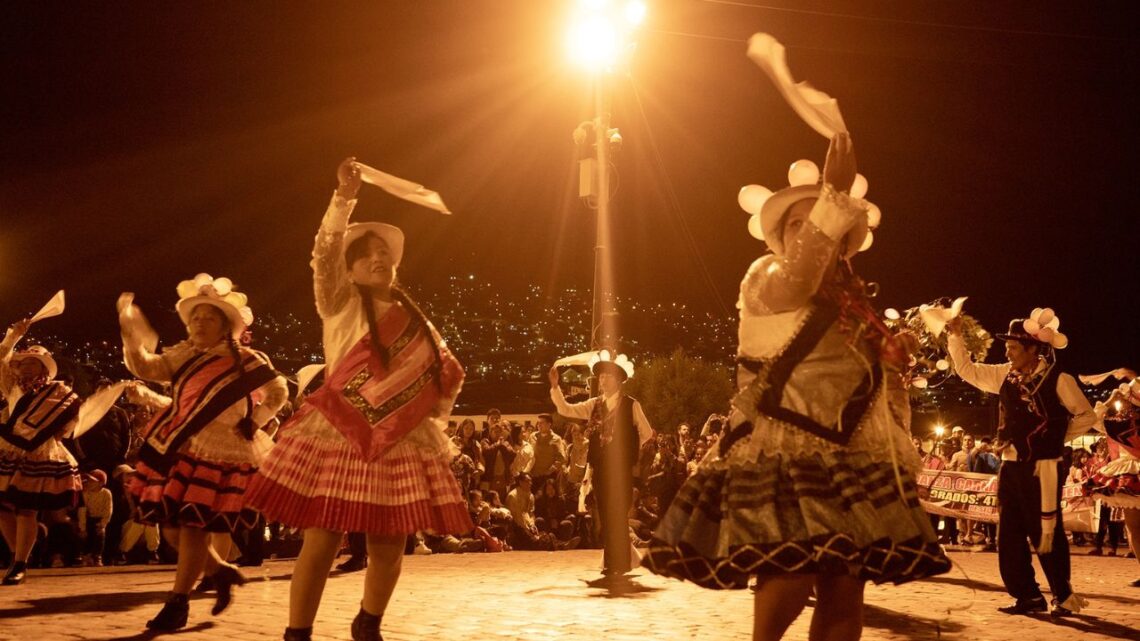Peru’s chicha, a psychedelic offshoot of cumbia, is surging again—and this time with even more vigor. What once played in Lima’s shantytowns is now resonating in clubs, festivals, and streaming playlists around the world.
In 2025, electric guitars, vibrant combo organs, and jungle-Andean melodies power a modern reinvention.
The arte chicha poster style continues to coat city walls, while pioneer bands and emergent acts push the genre into new territories.
Below is a comprehensive picture of how chicha has evolved, where it stands today, and why its electric rhythm holds so much appeal.
What Is Chicha Exactly?
Chicha blends roots:
- The rhythmic backbone of Colombian cumbia,
- The melodic inflections of Andean and Amazonian scales,
- Surf-inspired electric guitar riffs and Farfisa/organ hooks.
Emerging in the late 1960s and 1970s during massive rural-to-urban migration in Peru, chicha became the soundtrack for working-class communities—danceable, raw, accessible.
Milestones in 2025
- A storied band from Peru made history by becoming the first from the country to play a major international festival, opening doors for regional acts on global stages.
- In the same year, they performed at a renowned performing arts center in a major U.S. city—bringing Amazonian cumbia directly into a cosmopolitan cultural venue.
- Back home, Selvámonos festival continues to be a key platform: its Lima edition took place in April 2025, and the Oxapampa leg is slated for October 25, 2025.
- Meanwhile, the visual culture of chicha—its neon posters, quirky typography, symbolic imagery—remains physically etched across Lima’s walls, re-airing in public consciousness through contemporary media features.
The Soundscape of Modern Chicha
In 2025’s evolution of chicha:
- Twangy electric guitars remain central, weaving melodic solos over dance grooves.
- Organ and combo keyboard riffs provide signature hooks, sometimes colored with psychedelic reverb or modulation.
- Percussion and bass cling to the traditional syncopation of cumbia but are now often punctuated by electronic production elements, making the mix club-friendly and radio ready.
- Newer acts may layer in synth pads, samples, or beat programming—melding chicha with tropical, alternative, or electronic genres.
Because of this layering, chicha now comfortably sits in alternative Latin playlists and festival lineups alongside rock, indie, and electronic styles.
Why It Resonates Now
- Cultural authenticity meets innovation: Chicha still carries deep Peruvian roots—melodies, stories, local languages—but is open to expansion.
- Visual identity: The arte chicha aesthetic contributes powerful branding and continuity—posters, murals, apparel—making the style instantly recognizable.
- Festival & streaming circuits: With exposure from festivals and digital platforms, younger generations are discovering classic and new chicha acts alike.
- Emotional connection: For many in Peru and diaspora communities, chicha is tied to memory, identity, and pride. For new listeners globally, it’s fresh, danceable, and bold.
Challenges & Realities
- Some musicians in Peru face security risks and extortion, especially in regions where organized crime exerts pressure—an under-reported adversity behind the scenes.
- Commercial pressures push artists to balance innovation with tradition—too much crossover risks losing the genre’s distinctive identity.
- Infrastructure in smaller towns (sound systems, venues, promotion) still lags behind Lima, limiting equitable exposure for remote acts.
Chicha’s Landscape in 2025
| Topic | Current Snapshot (2025) |
|---|---|
| Global Breakthrough | A key Peruvian group became the first from the country to perform at a major international festival and later played a prominent U.S. performing arts venue. |
| Domestic Festival Scene | Selvámonos Lima: held in April 2025. Selvámonos Oxapampa: scheduled for October 25, 2025. |
| Visual Culture | “Arte chicha” posters still plaster Lima; new media features revive their cultural role. |
| Sound Features | Electric guitars, organ riffs, cumbia rhythms; modern inflections with electronics and production layers. |
| Audience & Reach | Younger audiences discovering chicha via streaming and festivals; cross-genre appeal rising. |
| Challenges | Security risks in some regions; resource imbalances across cities; tension between tradition and innovation. |
In 2025, Peru’s chicha sound is more than a revival—it’s a vibrant, evolving engine driving modern cumbia’s global path.
With electric grooves that bridge past and present, bold visual identities still emblazoning city walls, and increasing access through festivals and streaming, chicha’s electric rhythm has become a pulse for new discovery.
As artists navigate tradition and innovation, the genre’s legacy, adaptability, and bold character suggest it will continue shaping Latin music’s future.









